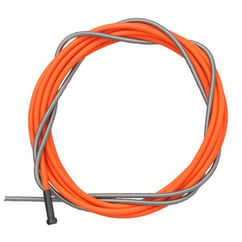/Fume%20Extraction/RAB_GRIP_%26_HE.png?width=646&name=RAB_GRIP_%26_HE.png)
In this blog we're going to focus on the 4 main topics concerning RAB torches & consumables, these are:
First up...
1. Torch selection.
Generally, there are 4 popular models of RAB torches - 3 air cooled & 1 water cooled (or liquid cooled as they are sometimes referred to as).
- Air cooled torches range up to 270 amps (mixed gases) and up to 1.2mm wire
- Water cooled torches range up to 450 amps (mixed gases) and up to 1.6mm wire
The chart below has been designed to help the torch selection process easier by visually highlighting each torches capabilities...
/Blog%20Pictures/RAB_Torch_Selection_Blog.jpg?width=1139&name=RAB_Torch_Selection_Blog.jpg)
To learn more about the benefits of using RAB GRIP fume extraction torches, please read this interesting blog 'Fume Extraction at Source'
2. Consumables
Once you have chosen your RAB torch you then have to think about your consumables setup.
Choosing the correct contact tip for your welding application is critical to produce a quality weld.
/Blog%20Pictures/Contact_Tip_Blog.jpg?width=326&name=Contact_Tip_Blog.jpg) Using the wrong contact tip can create problems like overheating and wire jamming - all of which can lead to wire burn-back.
Using the wrong contact tip can create problems like overheating and wire jamming - all of which can lead to wire burn-back.The 3 main contact tip options are:
- Standard (E-Cu)
- Heavy Duty (CuCrZr)
- Silver Plated (ABITIP®)
When a RAB torch is purchased, they will be fitted with the E-Cu contact tip as standard. Heavy duty & Silver plated contact tips last longer but are more expensive.
 To learn more about the importance of contact tips, please read this interesting blog 'Understanding Contact Tips for MIG Welding'
To learn more about the importance of contact tips, please read this interesting blog 'Understanding Contact Tips for MIG Welding'
Regarding the gas nozzle (or shroud), there are 3 options to consider:
- Conical (standard setup)
- Tapered
- Cylindrical
Below is an example of the a standard RAB torch setup and the different types of nozzles available (torch shown is the RAB GRIP 36 air cooled MIG/MAG torch) :
/Blog%20Pictures/RAB_36_Torch_Setup_Blog.jpg?width=720&name=RAB_36_Torch_Setup_Blog.jpg)
 To learn more about the importance of gas nozzles, please read this interesting blog 'Understanding MIG Welding Nozzles'
To learn more about the importance of gas nozzles, please read this interesting blog 'Understanding MIG Welding Nozzles'
3. Fume Nozzles
Once the standard torch consumables have been fitted there are a couple of options for the most important part - the fume nozzle.
Fume nozzle design and positioning in relation to the nozzle is also a very important evaluation feature for fume extraction torches. The shroud is what gives the fume torch the ability to capture harmful welding fume, and is where the fume extraction system is suctioning from on the welding torch.
Fume nozzle position is important because if it is too close to the process this can cause porosity from causing gas turbulence, while a fume nozzle too far removed from the process won’t capture fume effectively.
The are 3 versions, both ensure optimum fume nozzle positioning :
-
Spring Clip - the fume nozzle is pushed onto the outer tube and then secured into place with a spring clip with a locating pin which fits into a hole.
-
Quick-Lock - the fume nozzle is pushed onto the outer tube and is secured onto the outer tube by twisting a locking ring.
-
HE (High-Efficiency) - this screw-on version has a new extraction nozzle geometry and enlarged flow diameter for the extraction of welding fumes even in difficult working positions without endangering the gas shielding (available on RAB GRIP 36 HE & RAB GRIP 501 HE)
/Blog%20Pictures/RAB_36_Fume_Nozzles_Setup_2_Blog.jpg?width=1385&name=RAB_36_Fume_Nozzles_Setup_2_Blog.jpg)
4. Torch Liners
Choosing the correct torch liner is critical to prevent any wire feed problems such as wire burn back and bird nesting.
 There are 3 key factors when selecting a torch liner :
There are 3 key factors when selecting a torch liner :
- Are you using an air or water cooled torch?
- Are you welding at low or high temperature?
- Are you using a soft or hard wire?
The most common torch liners are:
- Steel Liners e.g. for welding mild steel
- PTFE e.g. for welding Aluminium
Useful tip!! We strongly recommend the use of COMBI versions (a standard liner fitted with a brass wire guide) in manual torches to increase performance, extend the life of the liner & prevent the liner from melting in the torch neck.
/Blog%20Pictures/252_pim-2.jpg?width=670&name=252_pim-2.jpg)

To learn more about the importance of selected the correct MIG torch liners, please read our interesting blog 'MIG Gun Liner Types & Best Practice'
Thank you once again for reading my blog!
/DS_Signature.png)

/LinkedIn_Profile_Picture.png)
